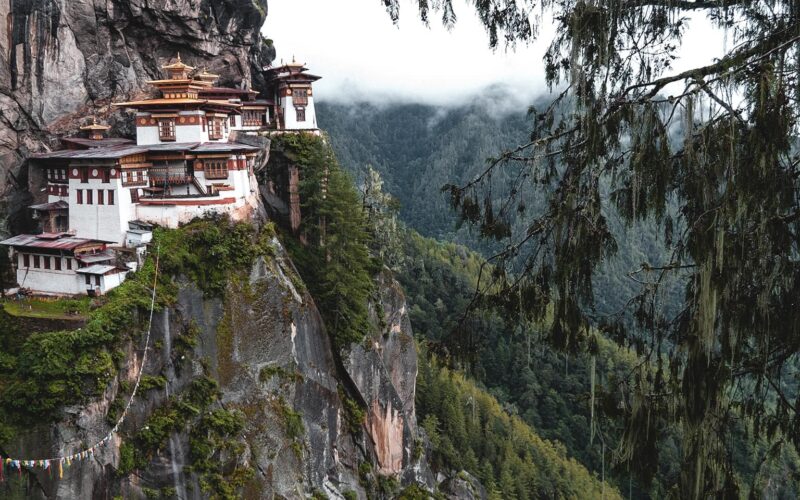The Tiger’s Nest monastery, perched precariously between two cliffs, stands as a testament to both Bhutan’s cultural richness and its awe-inspiring natural beauty. With its solid white walls, square slanted roofs, and an impossible placement, it has become a cultural and aesthetic symbol, drawing global travelers to witness its ethereal existence.
The Trek: The journey begins at the base camp, adorned with vendors, food stalls, and mules ready to assist. The 3000-meter ascent to the Taktsang monastery, or the Tiger’s Nest, starts gradually, the monastery appearing as a mirage from below. The climb is a mix of challenges and scenic delights, with broad, uneven steps making the trek manageable. As sunlight filters through the trees, prayer flags in vibrant hues dance in the crisp breeze. Some opt for mules until the mid-way cafeteria, where the climb becomes less strenuous. The entire trek, including the climb and descent, takes four to five hours.
The Legend: According to legend, Guru Padmasambhava flew on a tigress’s back to the caves now part of the monastery, meditating for three years to drive away evil forces. The Paro Taktsang, brocaded and stunning, stands as a testament to this extraordinary tale.
Inside the Caves: Before entering the interior chambers, visitors must surrender bags, cameras, and mobile phones. The caves exhibit a sudden temperature drop, urging the need for a light jacket. The stone steps lead to chambers adorned with various incarnations of Buddha. Despite a fire in 1998 that nearly destroyed the monastery, a restoration project concluded in 2004, leaving four temples within the complex. Thangkas cover the walls, and altars are adorned with offerings from visitors.
The Experience: Outside the monastery, a humbling experience awaits as visitors stand at the edge, gazing at a bird’s eye view of Paro. Gratitude for the body’s capabilities surges, especially when recalling the starting point of the trek far below.
Practical Information:
- Getting there: Paro International Airport, a 20-minute drive away, serves as the nearest airport.
- Places to stay: Near the base camp, homestays and budget-friendly hotels are available. For more luxurious options, explore the main town with bigger hotels and resorts.
- Things to carry: A water bottle, light snacks, sturdy shoes, and waterproof clothing are recommended for the trek, considering the frequent rain in Paro.
- Best time to visit: The summer months between May and October offer favorable weather for the trek.
Embark on a journey to Bhutan’s Tiger’s Nest, where cultural heritage meets natural wonder, creating an experience that transcends the ordinary.
